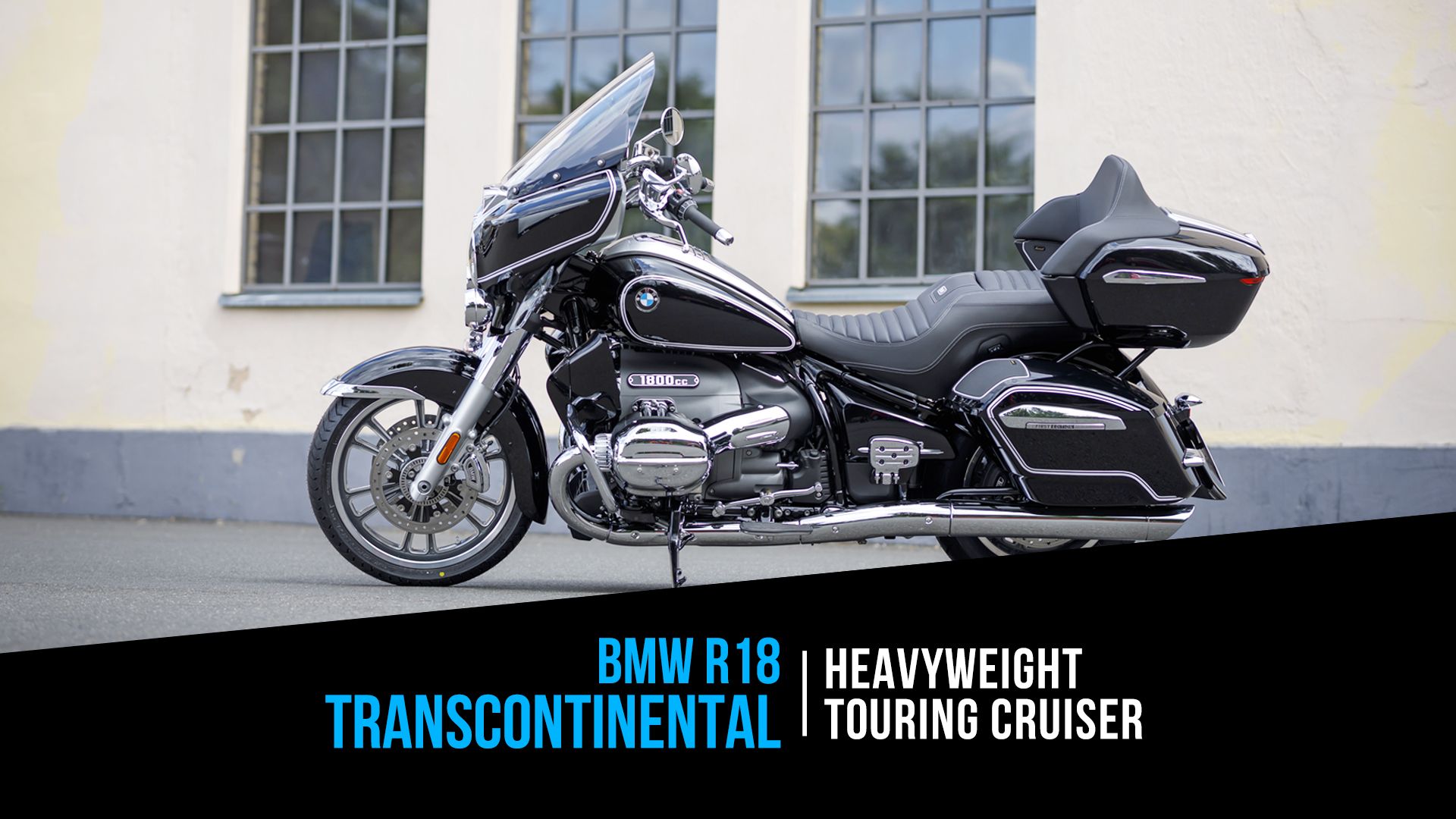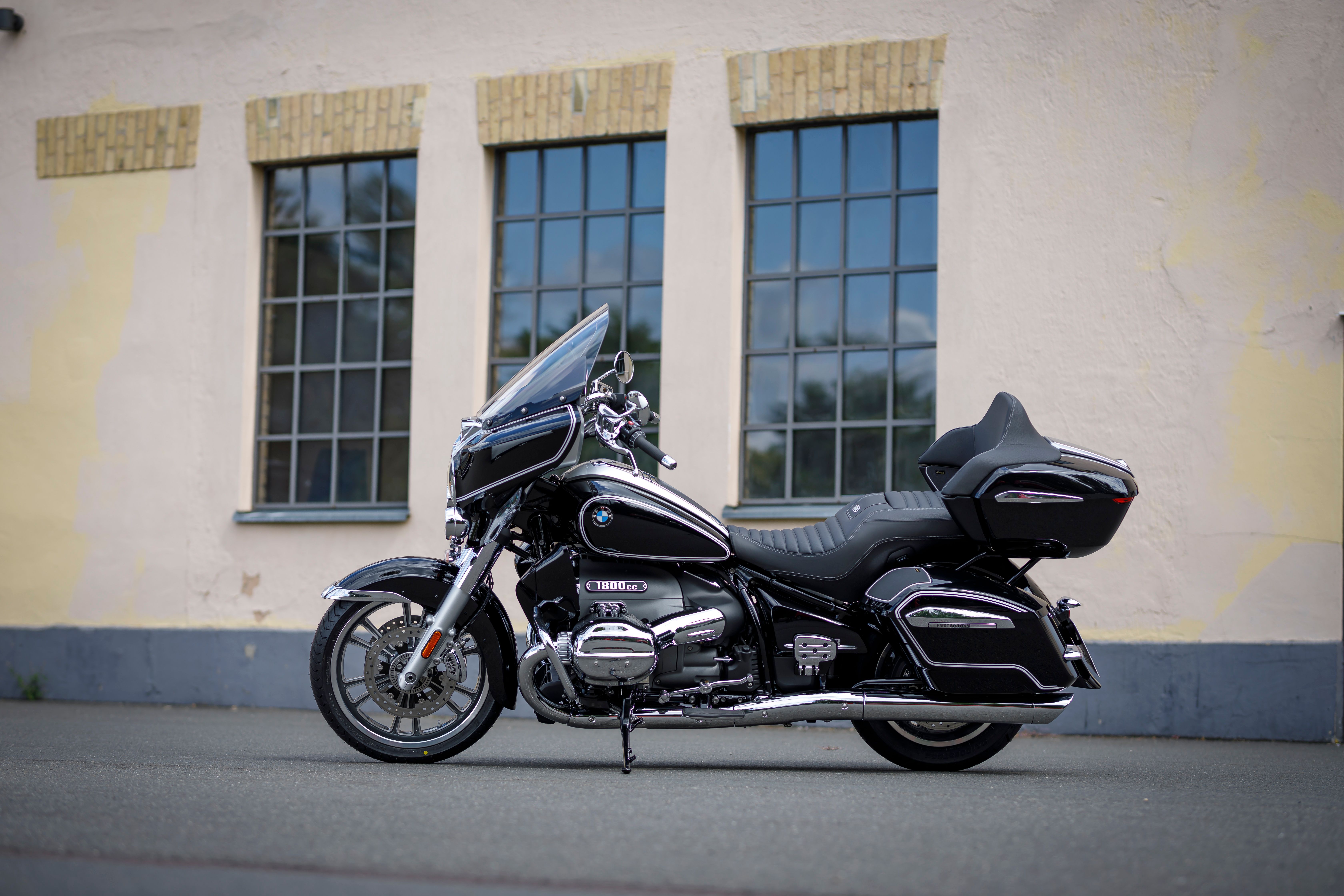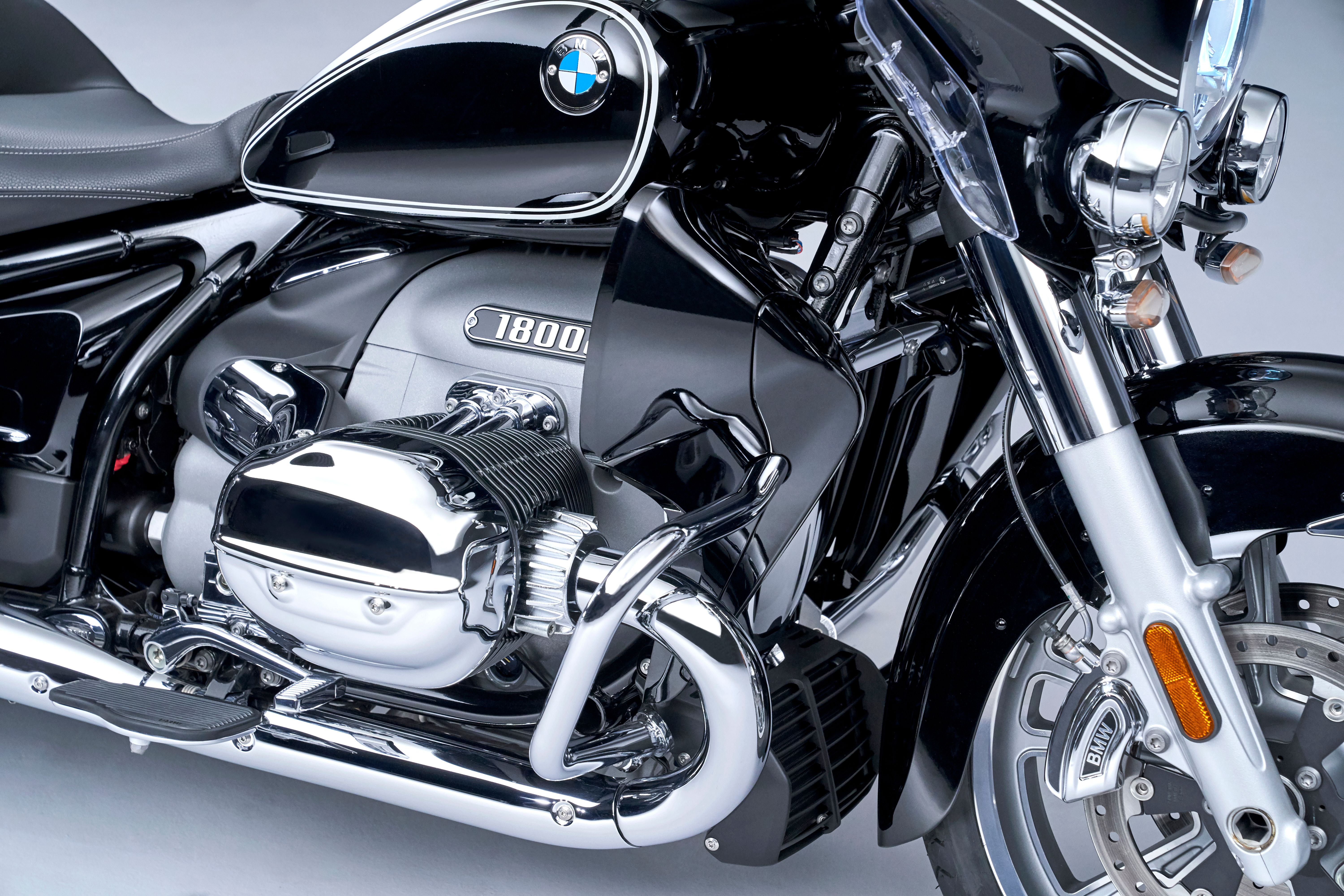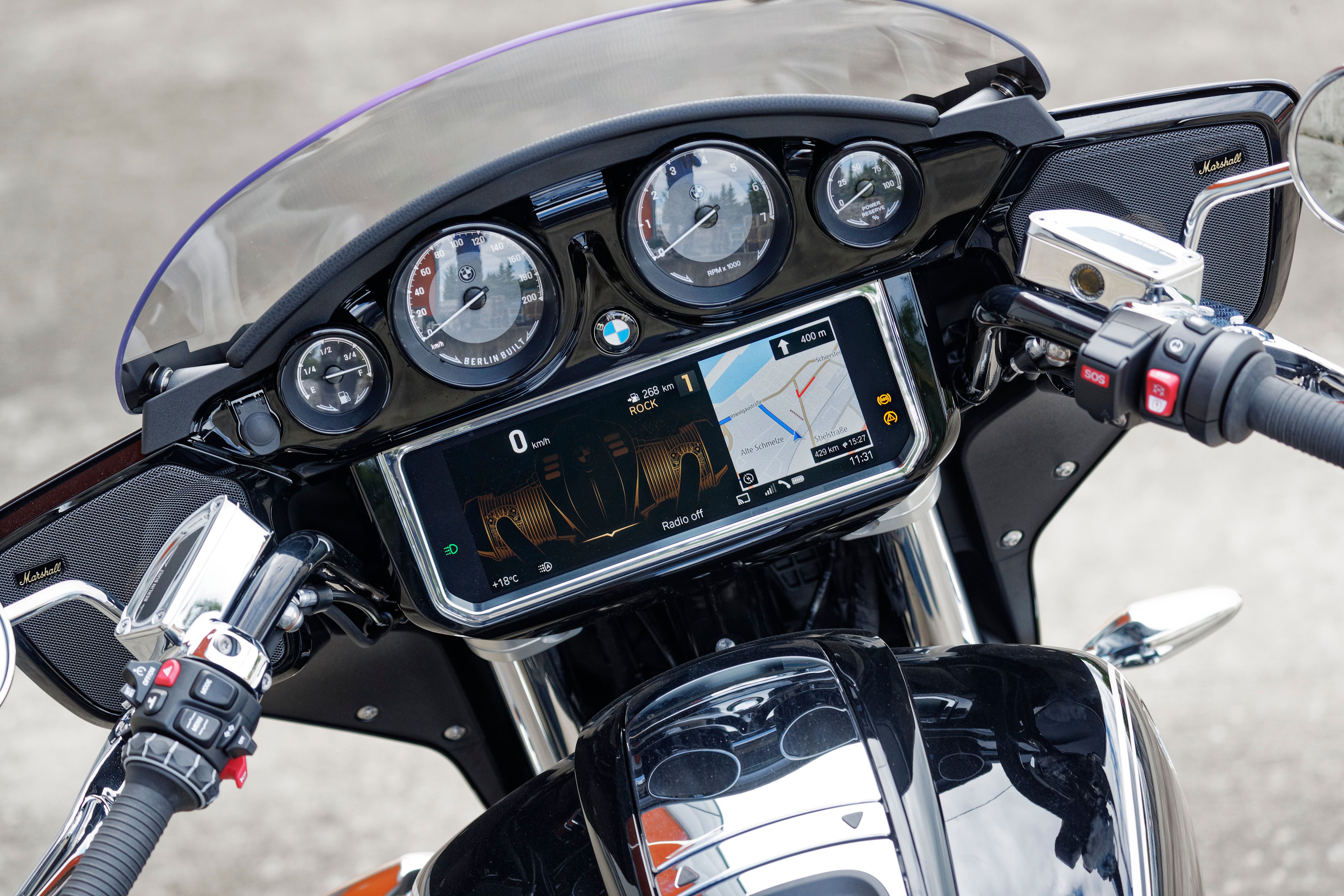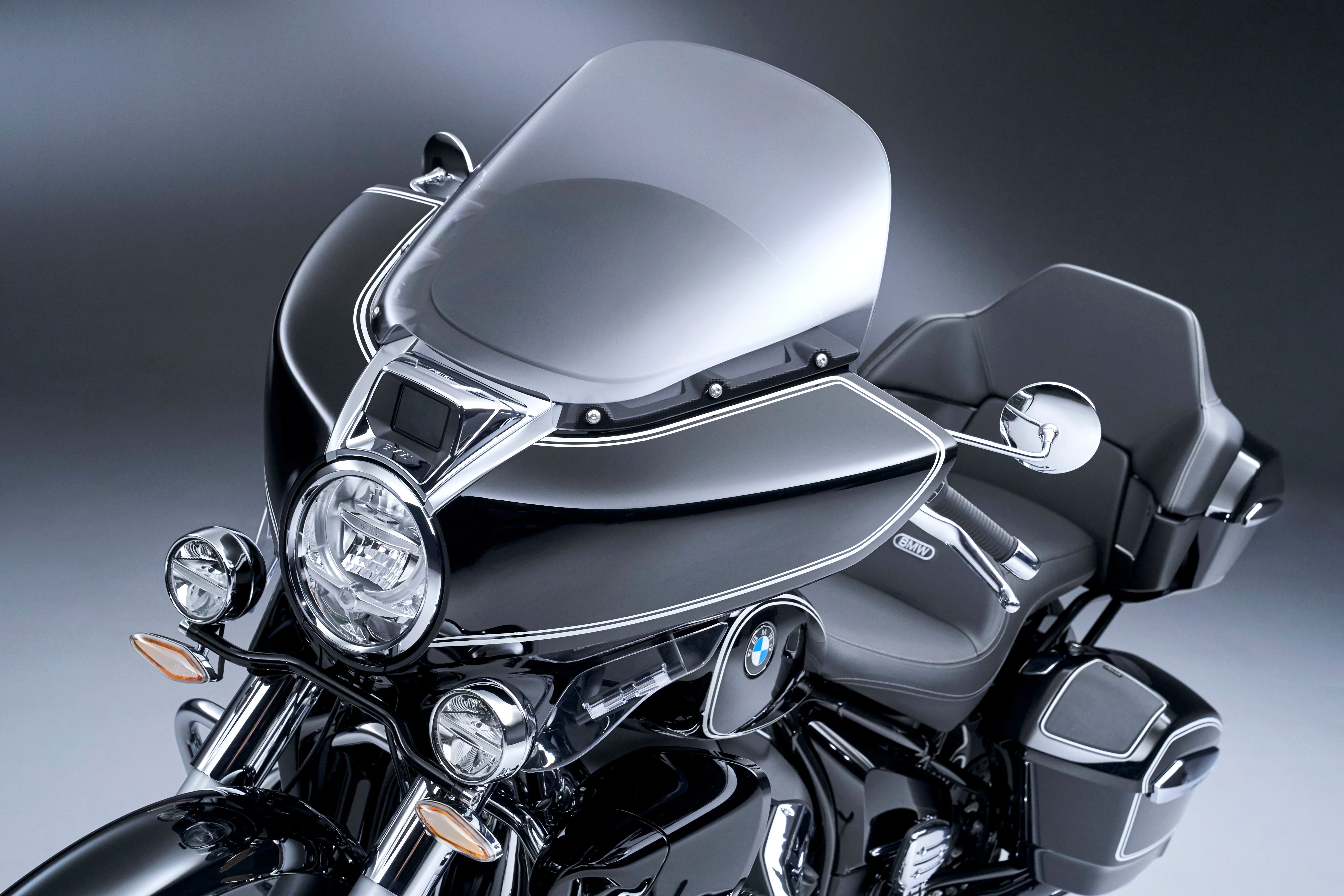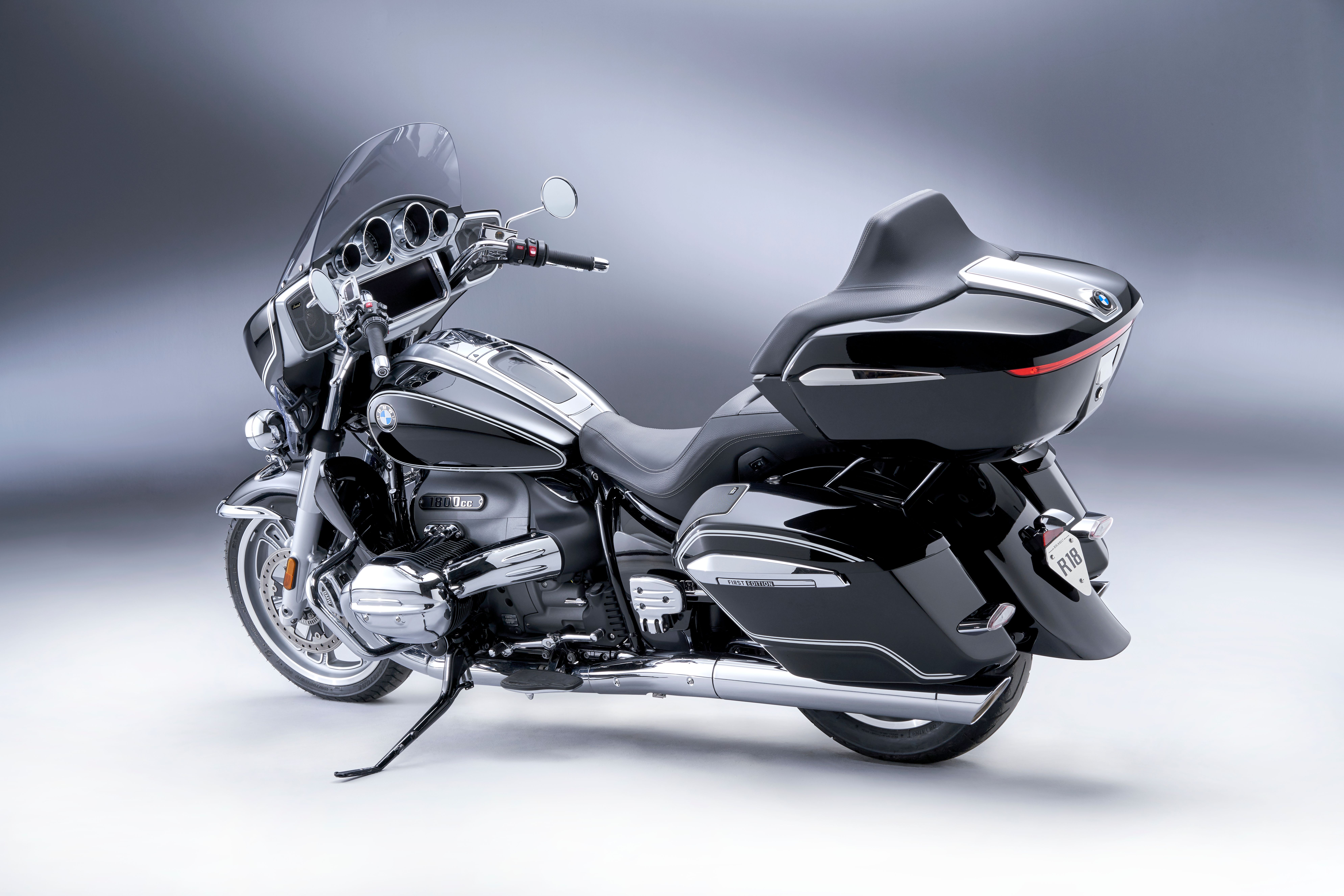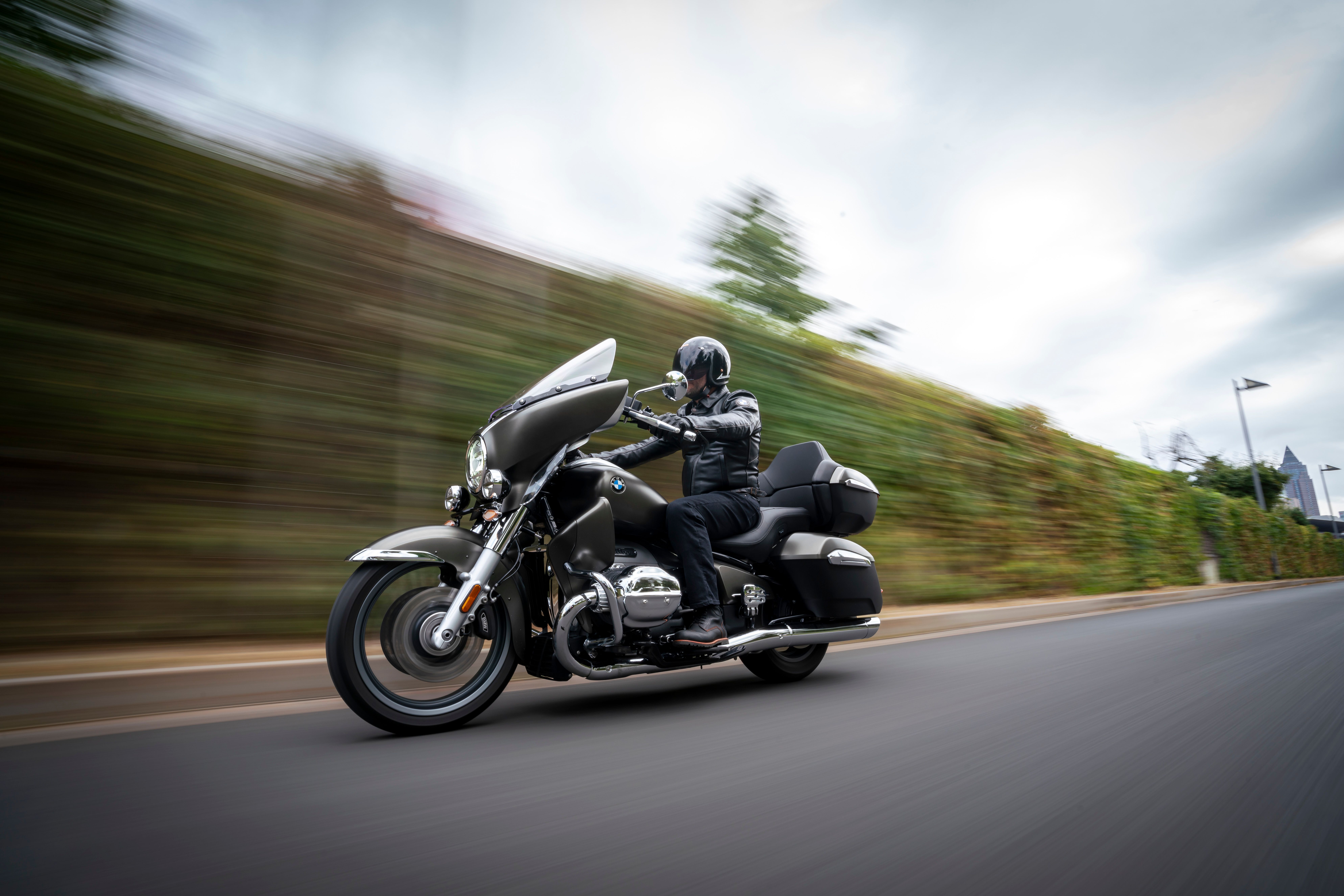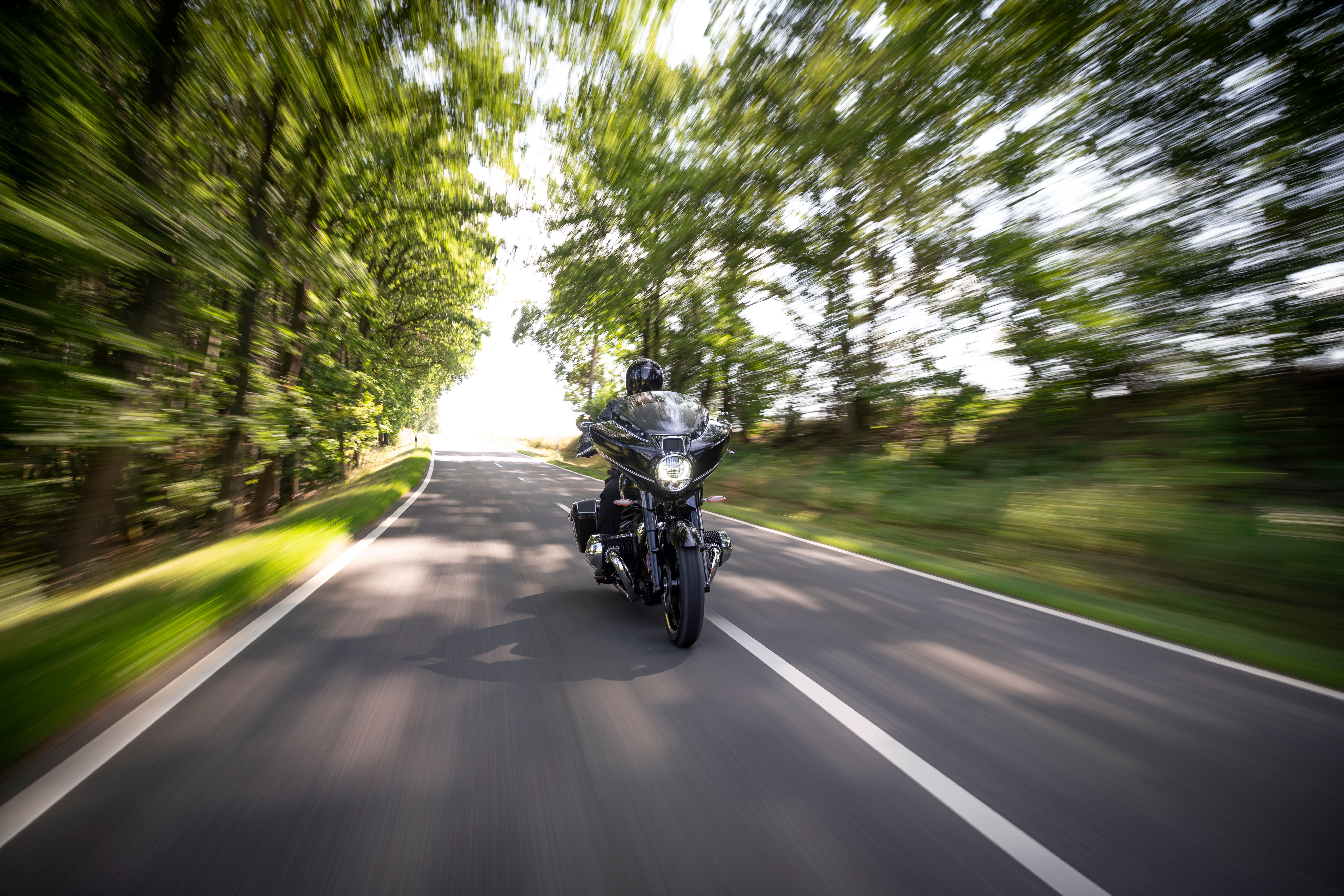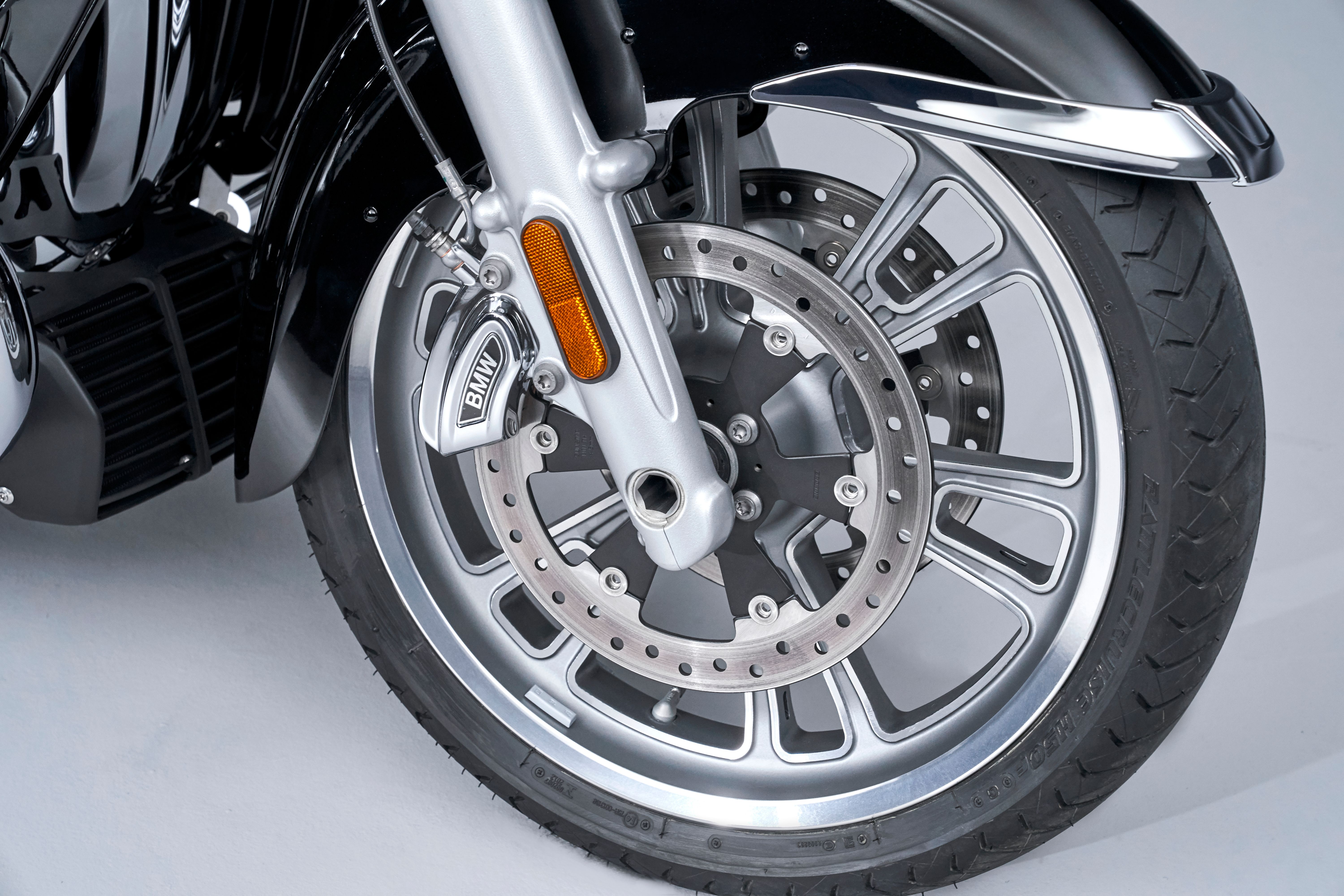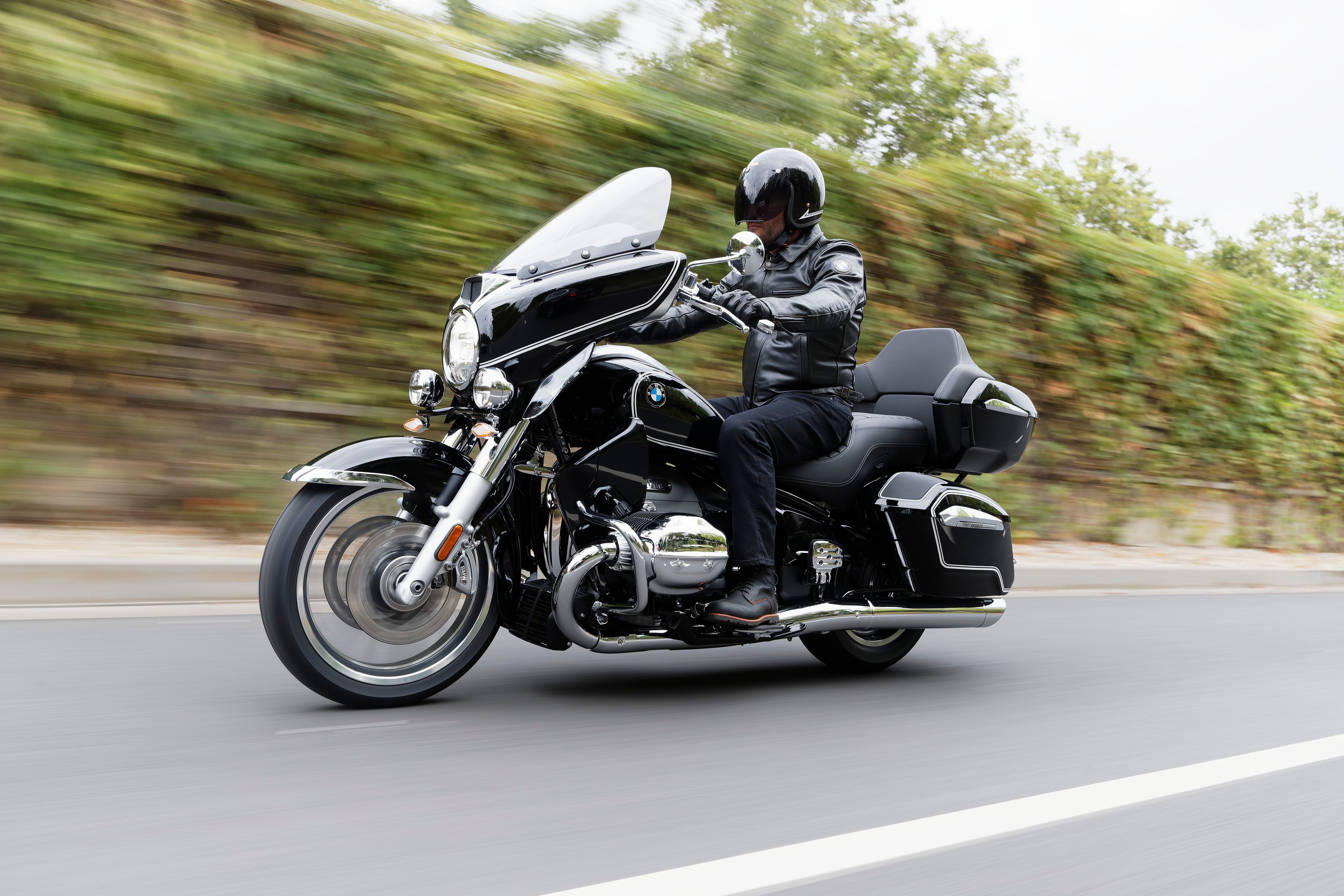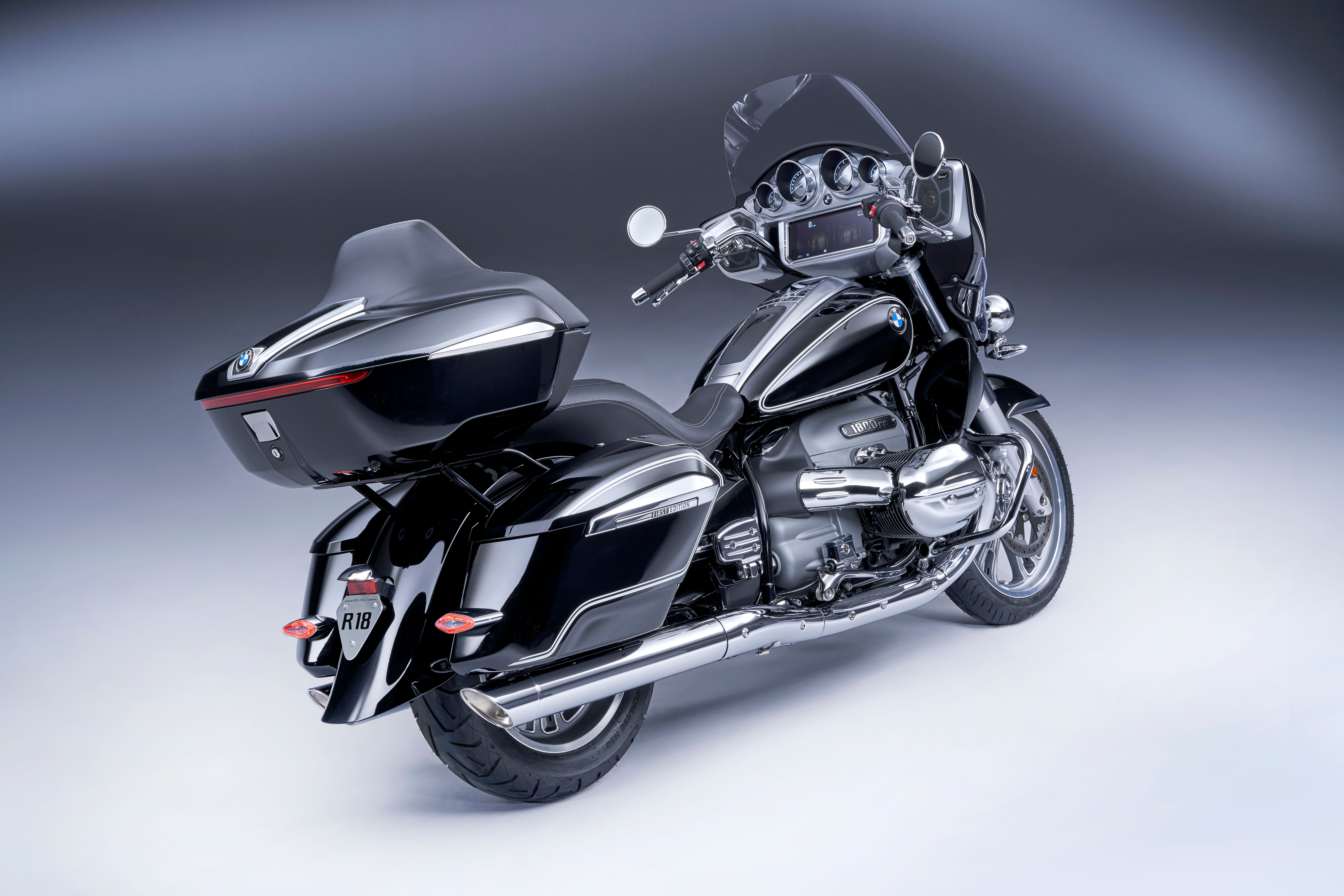With the introduction of the R18 cruiser, BMW clearly had big plans to introduce variations on the theme in order to multiply its attack on the hallowed ground reserved for Harley and Indian. These plans duly came to fruition and the latest model is the R18 Transcontinental, a heavyweight touring cruiser unashamedly in the mold of the H-D Road Glide Limited or Indian Roadmaster, while adding a dash of retro style to the mix. The big question is: has BMW succeeded?
It’s Not Just a Re-styled standard R18
It would have been the easiest thing for BMW to simply slap a set of panniers, a top box, and a fairing onto the R18 to create the Transcontinental but, BMW being BMW, that’s not the route they chose.
The frame is completely new, offering altered geometry at the forks to enhance stability and shortening the wheelbase by 1.5-inches to prevent the bike from feeling too lethargic in the corners. The fuel tank is (thankfully) larger by a couple of gallons to give the bike a decent touring range.
An unsurprising and not entirely welcome consequence of creating this large touring cruiser is the increase in weight. The R18 T is 181 pounds heavier than the standard R18, bringing it to a total of 941-pounds with all fluids. That’s in the ballpark of equivalent Harleys and Indians, although that doesn’t make it acceptable! What’s worse, is that the R18 T feels much heavier, despite the lower center of gravity.
The Engine
In a word: it’s enormous! But it’s also a not unattractive lump and it's certainly distinctive. At 1802cc, it produces 116 pound-feet of torque and 90 horsepower which is more than enough to push the weight along, especially at low revs where the majority of the torque lives, although it does start to feel a little breathless at higher speeds (over 80mph).
Another drawback at higher speeds is the amount of vibration that comes through the ‘bars, seat, and foot pegs. Below around 80mph, the balancer shafts on the engine do a good job but anything over 80mph and the shafts are clearly being stretched too far. Mind you, the R18T isn’t about ultimate top speed (99mph, if you need to know) but getting there is comfort and style.
The engine’s party piece, however, is trying to throw you off the bike sideways when you start up or blip the throttle at the lights: the torque reaction of those two massive pistons and the beefy crankshaft has to be felt to be believed, and will catch you out if you’re not aware of it. Just make sure you have solid ground under your feet: a hint of gravel and you’ll be laying the bike on its side!
Riding Modes
Oh, those hilarious folks at BMW. Most other manufacturers would be content with naming their riding modes Sport, Road, and Rain or variations thereof but not BMW. In an attempt to try and convince us that they are fun-loving and not simply efficient Teutons, they have named the three riding modes Rock, Roll, and, er, Rain (maybe naming the latter ‘Classical’ or ‘Opera’ would have stretched their funny bones too far).
‘Rock’ is the full beans, ‘Roll’ dials power delivery back perhaps a little too far and ‘Rain’ is for when things get really slippery or for when you are still laughing too much at selecting ‘Rock’…!
Non-Adjustable Screen on the fairing
At first, the huge bat wing fairing looks like any other huge batwing fairing, especially that on the Indian Roadmaster. It also works as well as the Indian’s fairing and has plus and minus points.
On the minus side is the lack of adjustability of the clear screen. It is a thick screen so the top edge is a thick black line that always seems to be in the wrong position, no matter the height of the rider. With no adjustability this isn’t ideal and, although alternative screens are available from the parts catalog, it seems an odd omission on a flagship model.
On the bus side are the adjustable flaps on either side on the lower edge of the fairing. These can be folded out to direct air onto the rider in hot conditions at slower speeds, although this air flow can become turbulent at higher speeds. To counter that, the flaps can be folded in to deflect the airflow away from the rider. Simple and effective.
Suspension
Configuring suspension elements to cope with all that weight but at the same time finding a balance between being too soft and promoting a wallowing feel and too hard giving a harsh ride is not easy but BMW seems to have it taped.
The R18 T never feels under- or over-suspended, giving a magic carpet ride on the straights but also feeling taut enough to instill confidence in long, fast sweeping bends.
It is possible to hustle the bike through tighter turns, the wide bars giving good leverage and the ground clearance is enough to prevent the footboards from scraping unduly. With all that weight, you’ll never unstick the rear tire and the 19-inch front wheel offers plenty of grip as well.
4.7 inches of suspension travel front and back means that nothing bottoms out, no matter the road irregularities.
Comfort
Need you ask? Comfort is impeccable, whether for rider or pillion. The seats are generously proportioned and a good shape and are, of course, heated for those cold mornings. The pillion has the top box as a backrest and vestigial armrests also.
The large cylinders sticking out either side preclude a foot-forward riding position and this lack of room to maneuver can get tiring after a while. BMW offers leg rests that fix atop the cylinders but getting your legs onto them in the first place isn’t the easiest and nor is it easy to whip them back onto the footboards for access to brake and gear lever. The low seat height means a fairly sharp knee angle.
The rider triangle is right dimensionally and takes only a few miles to become familiar with.
Gear Change
Such a large engine means a sturdy gearbox and the R18T is no different from any rival Harley or Indian in the chunky, mechanical feel of the gear change. What is different about the R18T is the rocking gear lever. Because of the lack of space between the floorboard and the lower edge of the left-hand cylinder, it’s difficult to get your booted toe under the lever for changing up. Rather, you use your left heel to stamp down on the lever for up-changes, using your toe for normal down changes.
It’s slightly counter-intuitive but, again, you quickly get used to it and it actually feels more natural, so much so that it takes a while to adjust to a normal gear lever when you jump on another bike.
Brakes
Such is modern braking technology that the front brake lever pressure to haul the R18 down from cruising speeds is out of all proportion to the work needing to be done. Twin discs up front offer great initial bite without being too sharp and that bite never lets up throughout the braking period.
The rear brake on a cruiser is often the better brake but that on the R18 is a little disappointing. The rear brake lever’s position doesn’t feel the most natural so you’re never quite sure if you’ve hit it or not and the brake’s bite is not all that great.
But overall, the brakes give no reason for anxiety.
Luggage
With both panniers and top box, you would expect a decent level of storage but, in reality, both are a little on the small side internally. What doesn’t help are the speakers for the stereo system robbing both panniers and a top box of a proportion of their storage space.
On the plus side, all boxes can be locked remotely either from the key or from a button on the handlebars. The R18T runs a keyless ignition system, by the way.
Cost
The base price for the R18T is $24,995 but, as with all bikes in this class, it is very easy to add significantly to that price.
The Premium Package costs $3,225 and adds Reverse Assist, which operates by reversing the rotation of the starter motor, radar-enhanced active cruise control, hill start assist, upgrades the headlights— daytime running lights and cornering-aware lighting and Marshall Gold Series 2 six-speaker audio system, which is as bad as any other stereo system on any bike.
You can also opt for the Select package for $950, which adds security items such as central locking, a locking gas cap, an alarm system, and a tire-pressure monitoring system.
Tick the box for both those options and $30,000 becomes a very possible figure very quickly. That compares well to the Harley Road Glide Limited but what isn’t quite so clear is how much of a dent in Harley Davidson’s stranglehold on the large touring cruiser market the R18 Transcontinental will make.
FAQ
Q: How much horsepower does the BMW R18 Have?
The R18’s 1802cc engine puts out around 90 horsepower.
Q: How fast is the BMW R18?
The top speed of the BMW R18 is in the region of 100mph.
Q: How much does the R18 Transcontinental weigh?
The R18 T weighs in at 941 pounds with all fluidsl
Q: Does the BMW R18 have a reverse gear?
Yes, it has a manually-engaged reverse which uses the starter motor running in reverse.
Q: How much does an R18 Transcontinental cost?
The base price for the R18 T is $24,995.
Q: How much horsepower does the BMW R18 Have?
The R18’s 1802cc engine puts out around 90 horsepower.
Q: How fast is the BMW R18?
The top speed of the BMW R18 is in the region of 100mph.
Q: How much does the R18 Transcontinental weigh?
The R18 T weighs in at 941 pounds with all fluidsl
Q: Does the BMW R18 have a reverse gear?
Yes, it has a manually-engaged reverse which uses the starter motor running in reverse.
Q: How much does an R18 Transcontinental cost?
The base price for the R18 T is $24,995.

